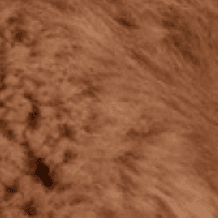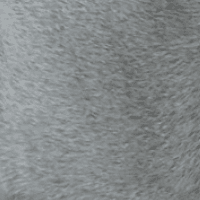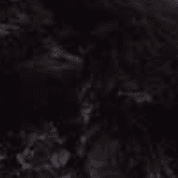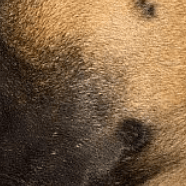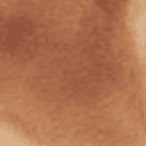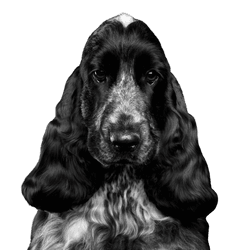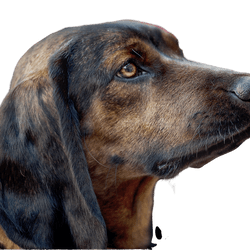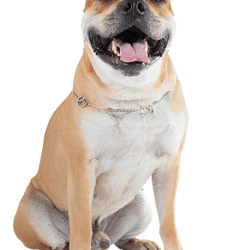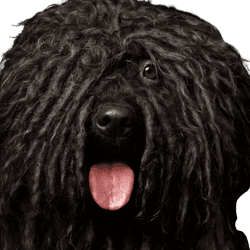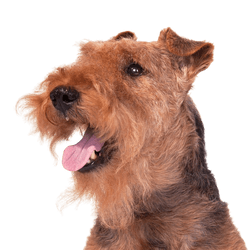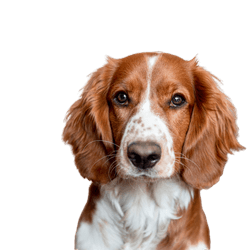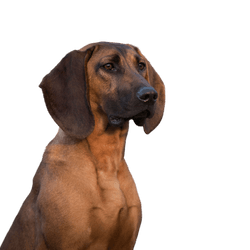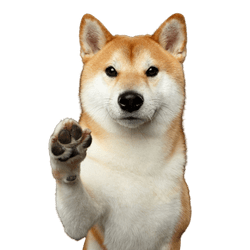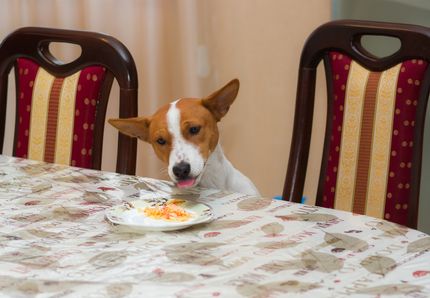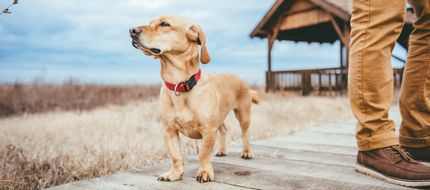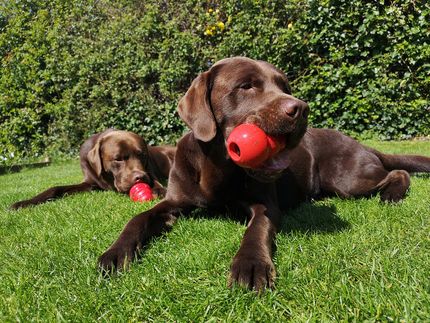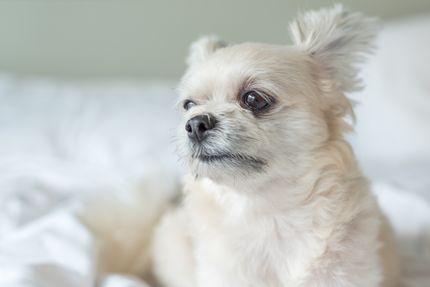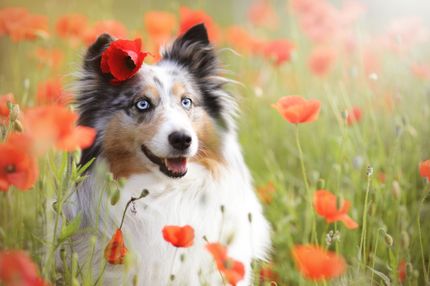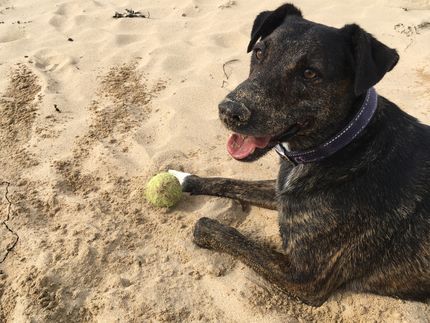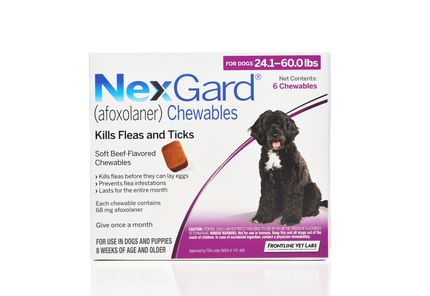Facts & Origin
The versatile domestic dog Pinscher
Pinschers belong to a group of dog breeds. According to the FCI, Pinschers and Schnauzers are assigned to the same section. This is how they are referred to as "Pinschers":
- Doberman (FCI standard no. 143)
- German Pinscher (184)
- Miniature Pinscher (185)
- Affenpinscher (186)
- Austrian Pinscher (64)
- Dansk-Svensk Gårdshund (356)
The Doberman Pinscher is considered to be the largest, the Mini Pinscher, as the name suggests, is the smallest - but the Affenpinscher (FCI standard no. 186) is the smallest species. Compared to the German Pinscher, the Austrian Pinscher (FCI standard no. 64) looks slightly more rustic and is broader in stature. Pinschers used to be widespread in Central Europe, especially in southern Germany and neighboring Austria.
What does the name mean?
Etymologically, the term "Pinscher" comes from the German language and roughly means"biter". Later, the word was borrowed from the English "pinch", which alludes to the Pinscher's cropped ears.
What is the origin of the Pinscher?
Little is known about the origin of the Pinscher. It is disputed whether the Pinscher, like the Schnauzer, is descended from the English terrier or vice versa. According to one theory, it is descended from the black terrier . The other assumes that its ancestor was the now extinct Rat Pinscher. The fact is that Pinschers have not changed significantly since the beginnings of pedigree dog breeding over 100 years ago. Historically, it has also been dubbed the "nice dog breed", which is said to have replaced the pug.
Werner Jung, who promoted the flourishing of the breed in the fifties of the 20th century, deserves a special mention for the preservation of the breed. Today, smooth-haired and rough-haired Pinschers are classified separately and are also counted as Schnauzers, although rough-haired Pinschers are more common. Both are listed together in the Pinscher-Schnauzer-Klub 1895. In the 19th century, Pinschers were kept as guard and hunting dogs on farms to protect property and chase away rats. They were mainly used as stable and carriage dogs and were present on almost every farm around 1900. This earned them the nicknames"Stallpinscher" and"Rattler". Since 2003, however, the Pinscher, like the Spitz, has been on the list of endangered domestic animal breeds.
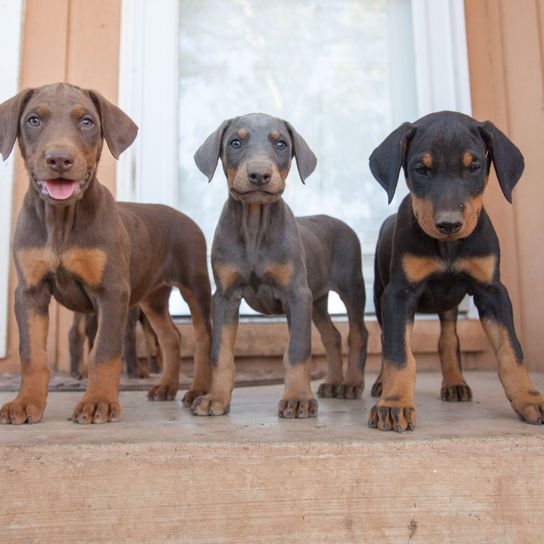
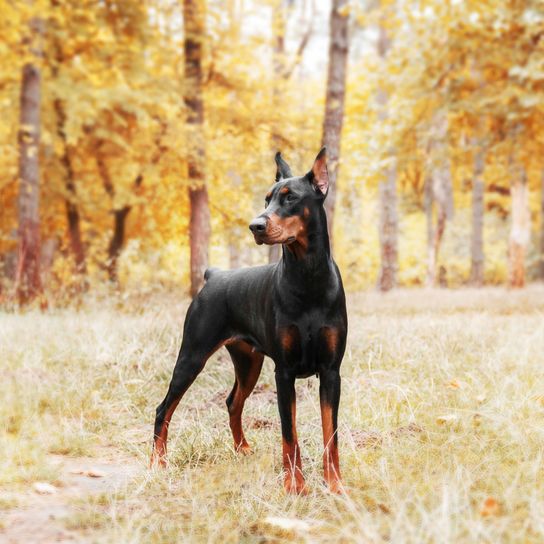
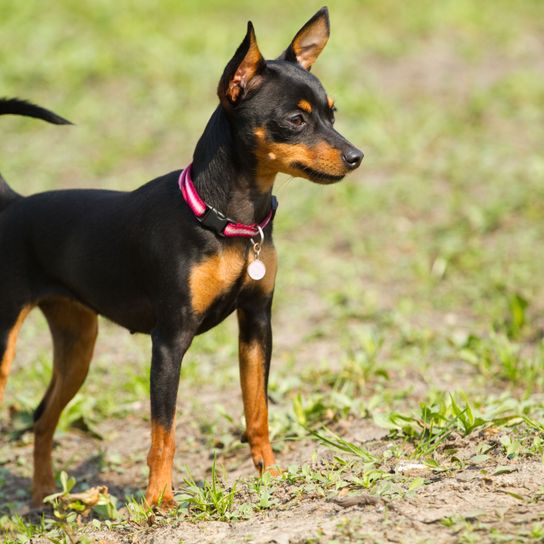
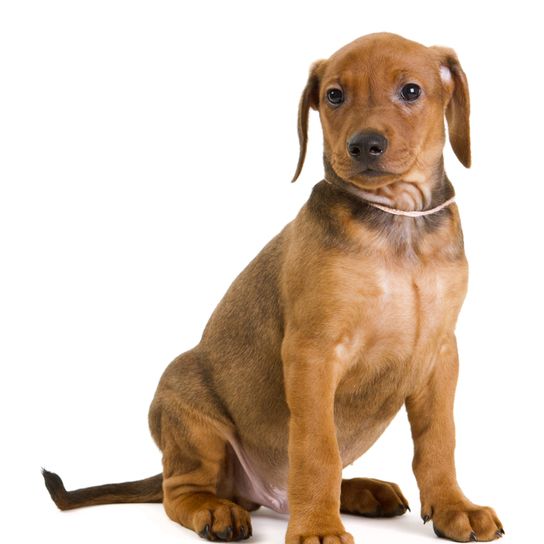
| Alternate Name | - |
| Origin | Germany |
| Life expectancy | 10 - 15 years |
| Care requirements | low-maintenance |
| Activity level | high |
| FCI group | Pinscher and Schnauzer type |
| AKC group | not recognised |
| KC group | not recognised |
Attitude, character and temperament of the breed
What are the typical character traits of Pinschers?
Pinschers, a diverse group of dog breeds, includes the German Pinscher, Miniature Pinscher and Doberman, each with unique character traits , but what they have in common is their intelligence, energy and loyalty.
The German Pinscher, medium-sized and robust, is known for its courageous and alert character. It is an excellent watchdog that is also loving and loyal to its family. His intelligence makes him easy to train, but he needs consistent training.
The smaller Miniature Pinscher is lively and playful, often described as a"big dog in a small body". His energy and curiosity make him an entertaining companion, but he can also be stubborn. It is well suited to active families.
The Doberman, the largest of the Pinschers, is a proud and powerful dog. He is extremely loyal and protective of his family and is an excellent guard and protection dog. His spirited and intelligent nature requires an experienced hand in training.
Across all breeds, Pinschers share a certain independence and self-confidence . They are affectionate with their families, but can be reserved with strangers. Regular exercise and mental stimulation are essential to keep them happy and balanced. With the right training and attention, Pinschers are loyal and loving family members.
Character
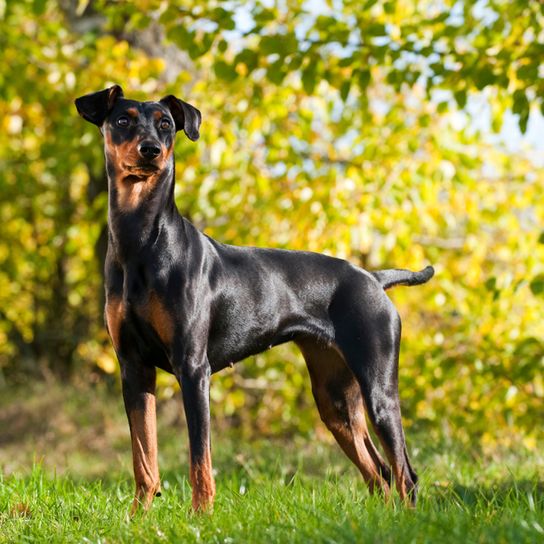
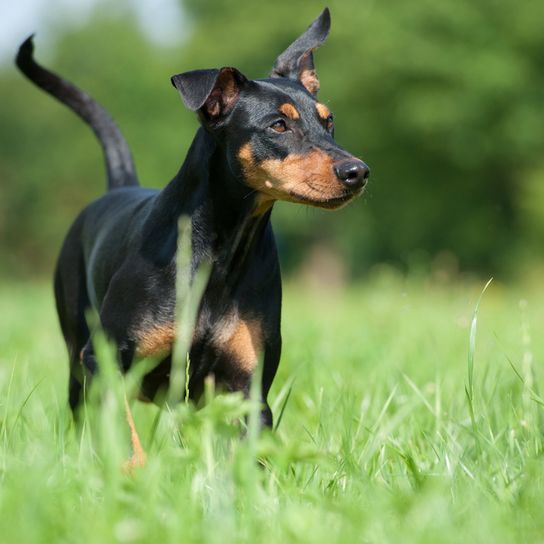
What are typical diseases of a Pinscher?
The German Pinscher only has a small number of genetic diseases that can be traced back to breeding. Pinschers can be susceptible to ear problems, the so-called ear rim problem, as they only have a thin layer of hair and are therefore prone to minor injuries. Hip dysplasia is a mandatory part of the health care and disease prevention program. Optional are the detection of eye diseases, color fading and Von Willebrand's disease, a blood clotting disorder. According to the German Animal Welfare Act, ear cropping has been banned since 1987 and tail cropping since 1998. Pinschers are not suitable for allergy sufferers, despite their short coat, as they also shed. Schnauzers or poodles would be suitable for allergy sufferers.
What should be considered when breeding?
The breed characteristics and specified standards must be met, this is the only way to identify a reputable breeder. Care should also be taken to ensure that neither ears nor tail are docked. If you want to breed Pinschers, you should inform yourself well beforehand in order to meet all requirements.
If you inform yourself well in advance and find a reputable breeder, you can face the Pinscher adventure with confidence and will be rewarded with a loyal friend at your side. Whether you get the small version Affenpinscher, the German Pinscher or the large version with the addition Dobermann is up to you. In any case, this little friend will enrich your life and everyday routine.

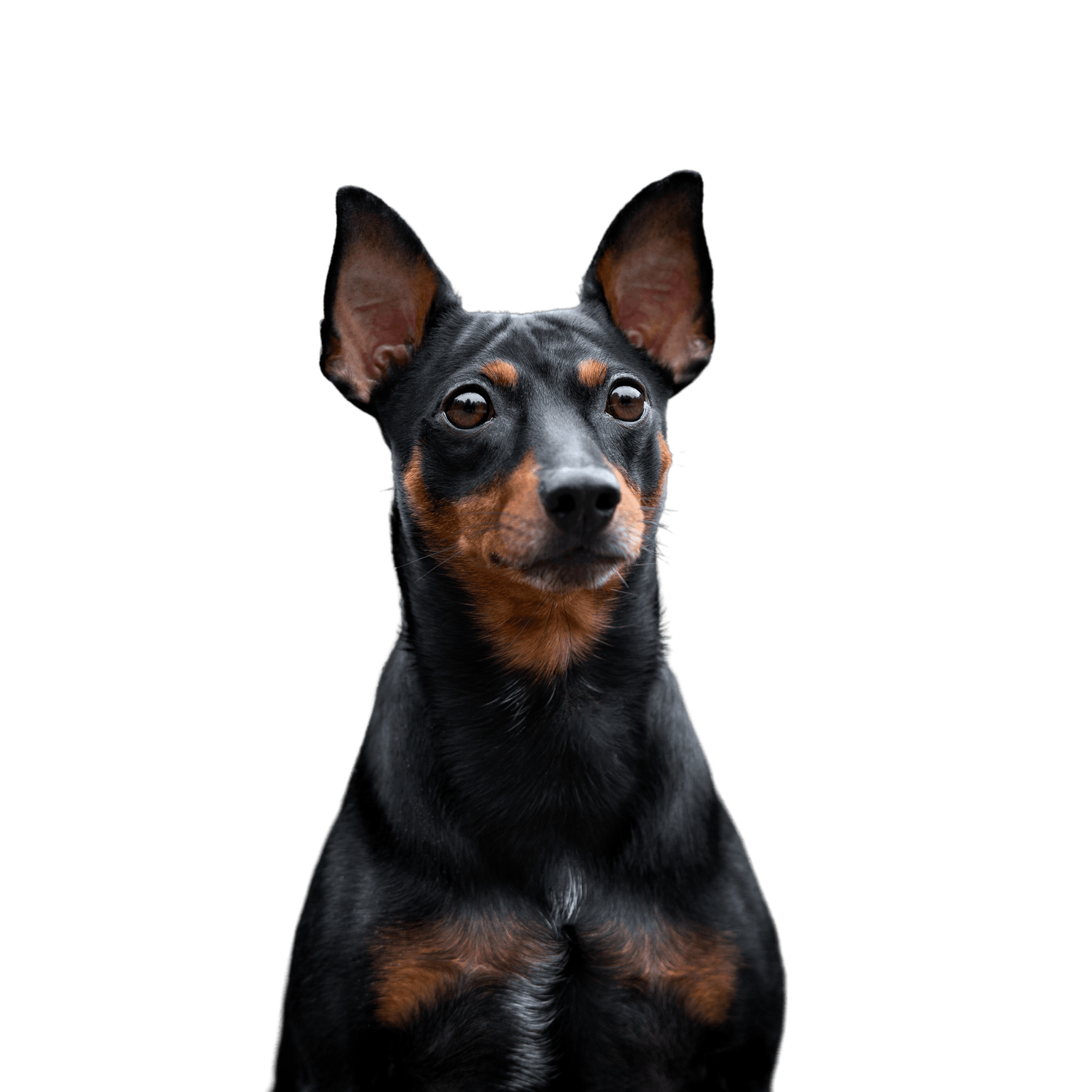
Appearance and coat of the Pinscher
As there are different types of Pinschers, not every Pinscher breed looks the same. For example, the difference in size between the Doberman and the Miniature Pinscher is quite remarkable.
They are usually medium-sized to small dogs with an athletic, elegant build and a short, smooth coat. Typical of the breed are their wedge-shaped head, alert, dark eyes and high-set, usually standing or tilted ears.
The German Pinscher (45-50 cm) and the Doberman (63-72 cm) look particularly powerful and muscular, while the Miniature Pinscher (25-30 cm) has a compact but equally athletic build. The Affenpinscher (25-30 cm) stands out with its shaggy, wiry coat and striking "monkey face" with bushy eyebrows and beard.
The coat colors range from black and red (in Dwarf Pinschers, German Pinschers and Dobermans) to red, brown or yellow. The short hair makes them easy to groom and emphasizes their bright, self-confident appearance.
| Fur length | short |
| Fur | flat coated |
| Ear shape | Tilt-ear |
| Tail | lang |
| Anatomy | muscular, slim |
| Size ♀ | 15 - 60 cm |
| Weight ♀ | 3 - 30 kg |
| Size ♂ | 15 - 60 cm |
| Weight ♂ | 3 - 30 kg |
| Suitable For | - |
Colors



Known Diseases
Hip dysplasia (HD)
Hip dysplasia (HD) is a genetic condition in dogs where the hip joint is not shaped properly. This leads to pain, stiffness and restricted movement.
Numbness
Often occurs in old age.
Blue Doberman Syndrome
Blue Doberman Syndrome (Alopecia). This is a hereditary disease that leads to progressive hair loss.
Dancing Doberman Diseas
Initially, there is only bending of the legs, which is caused by muscle failure. In the advanced stage, the disease then leads to paralysis.
ear canal inflammation
Chronic inflammation of the ear canal can occur in some breeds. Common in dogs that like to swim.
FAQ
-
The Pinscher group includes various breeds, including the German Pinscher, Miniature Pinscher, Affenpinscher and Doberman. All are descended from old farm and guard dogs and are characterized by their alertness, intelligence and agility.
-
Pinschers originated in Germany and were originally used as guard and rat-catcher dogs on farms. Their roots go back to the Middle Ages.
-
The size varies depending on the breed, e.g:
- Miniature Pinscher: 25-30 cm, 4-6 kg
- German Pinscher: 45-50 cm, 14-20 kg
- Doberman: 63-72 cm, 30-45 kg
-
Yes, Pinschers are loyal, active and people-oriented. They can be good family dogs, but require clear leadership and consistent training as they are self-confident and temperamental.
-
Pinschers are very alert and watchful by nature. They reliably report strangers, but are not overly aggressive watchdogs if they are well socialized.
-
Pinschers are generally robust dogs, but some breeds are prone to hip dysplasia, heart problems or eye diseases. Miniature Pinschers are also prone to patellar luxation (kneecap problems).
-
Partial. The Miniature Pinscher can be well suited to beginners, while the Doberman is more suitable for experienced owners, as they can be independent and demanding to train.


